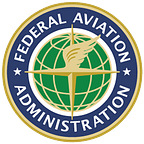Stephen Brown
Aircrew Program Manager, FAA’s Boston Flight Standards District Office
By Paul Cianciolo, FAA Safety Briefing Magazine
What do a lobster, a pot, and chowder have in common? To New England local Stephen Brown, they are the three components needed to make a five-star instrument-rated pilot — translated to qualification, currency, and proficiency. A safe pilot understands all three.
Our crustacean friend can navigate the depths without the need to see, even when Poseidon churns up the seafloor, causing subaquatic instrument meteorological conditions (IMC). One could say he’s a qualified captain, but that doesn’t mean he won’t get caught in a trap.
“Each year, we have so many people who are instrument-rated and continue into IMC conditions they should be avoiding. They think they can do it because they are rated,” Stephen explains. “Being qualified is great, but that should be considered a knowledge/decision skill, not a regular operational skill.”
If you don’t want to go from lobster pot to stock pot, stay current. Think of currency as your license to learn.
“What I see as being current for IFR flights is that you have demonstrated the skill set to go out and learn more,” he notes. “You can fly in selected conditions to improve your skills and have an instructor conduct an instrument proficiency check. You need to hone and develop those skills.”
This is where our culinary trifecta is perfected into a good cup of chowder — with proficiency. That means you can apply those skills in varying conditions and situations and know the conditions and situations to avoid.
“A proficient pilot knows that the hardest decision is the internal debate to cancel before a flight,” he said. “Being a proficient pilot also means being able to fly your aircraft without automation in difficult situations. It involves being able to change the level of automation you are using at any given moment without it being a factor.”
With more than 8,000 hours as an airplane and glider flight instructor, Stephen is still all about improving his skills and flying as much as he can. He has flown more than 100 makes and models ranging from powered parachutes to gliders, ski planes, and small corporate jets.
Before joining the FAA in 2009, Stephen earned a bachelor’s degree in aviation from Daniel Webster College and a master’s degree with a focus in simulation from Embry-Riddle Aeronautical University. He has worked or flown for Comair, Embry-Riddle, Sporty’s Pilot Shop, and Cape Air. He was also an aviation program director at the University of Cincinnati and Daniel Webster College.
At the FAA, Stephen’s most memorable role was his nine-year stint as an FAA Safety Team (FAASTeam) program manager where he was integral in educating fellow pilots. Now, he is an aircrew program manager in the Boston FSDO assigned to Cape Air. He oversees the regulatory involvement of the regional airline’s aircrew designated examiners.
“The funny thing that led me to the FAA is an intervention at AirVenture in Oshkosh. I would occasionally help with what is now the KidVenture portion, maybe do a seminar or two, and would just be generally involved,” he reminisces. “One day, a bunch of us were watching the aerial performance from some picnic tables, and I realized that all the FAA people I had worked with were sitting around me. One of them looked at me and said, ‘Steve, this is an intervention.’ That’s when I decided I needed to come to work for the FAA, somehow, some way.”
So, this is your intervention: next time you fly for that $100 hamburger — try upgrading to a lobster chowder. And to keep you safely out of the stock pot, remember the three ingredients needed to make a five-star instrument-rated pilot: qualification, currency, and proficiency.
Paul Cianciolo is an associate editor and the social media lead for FAA Safety Briefing. He is a U.S. Air Force veteran and an auxiliary airman with Civil Air Patrol.
